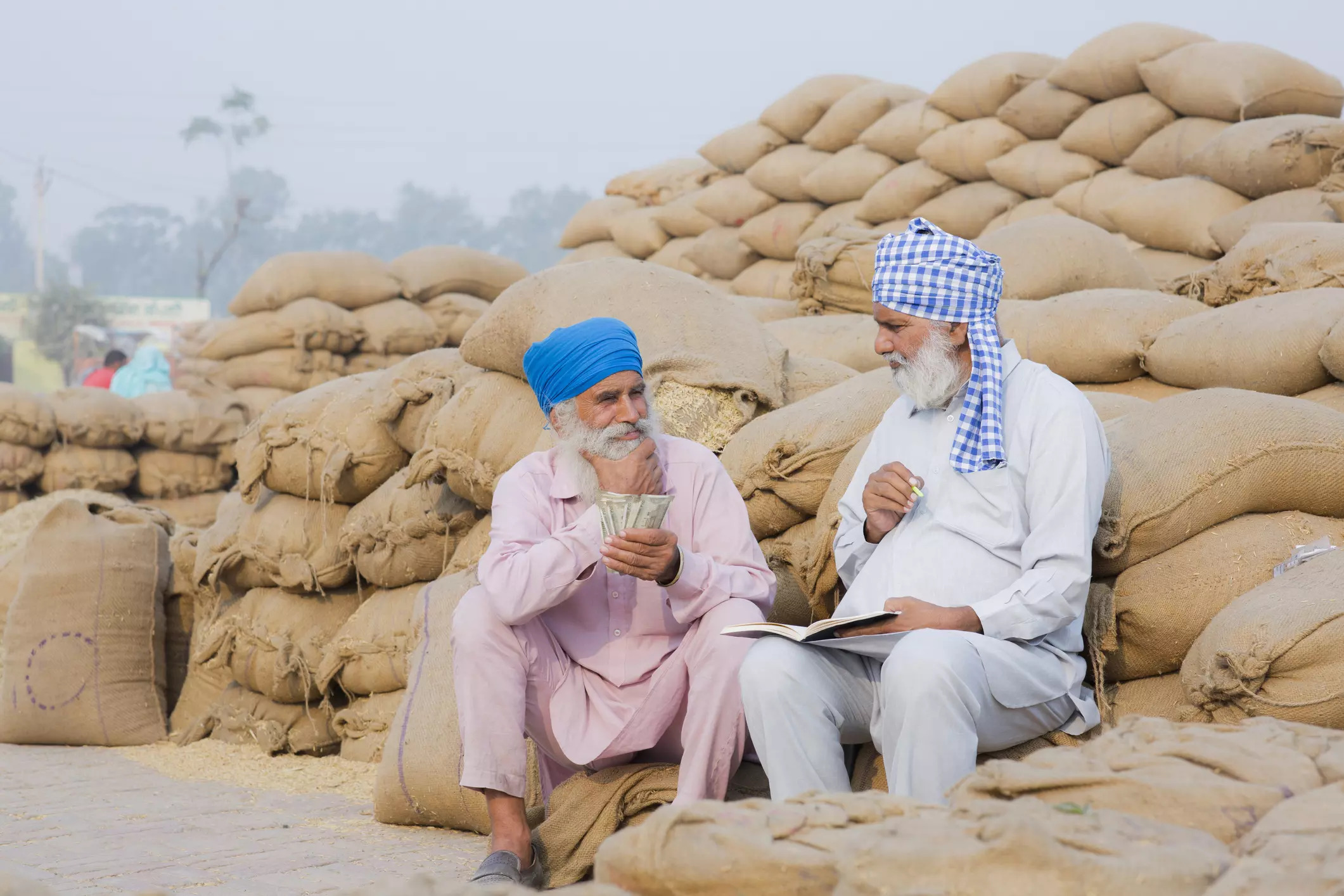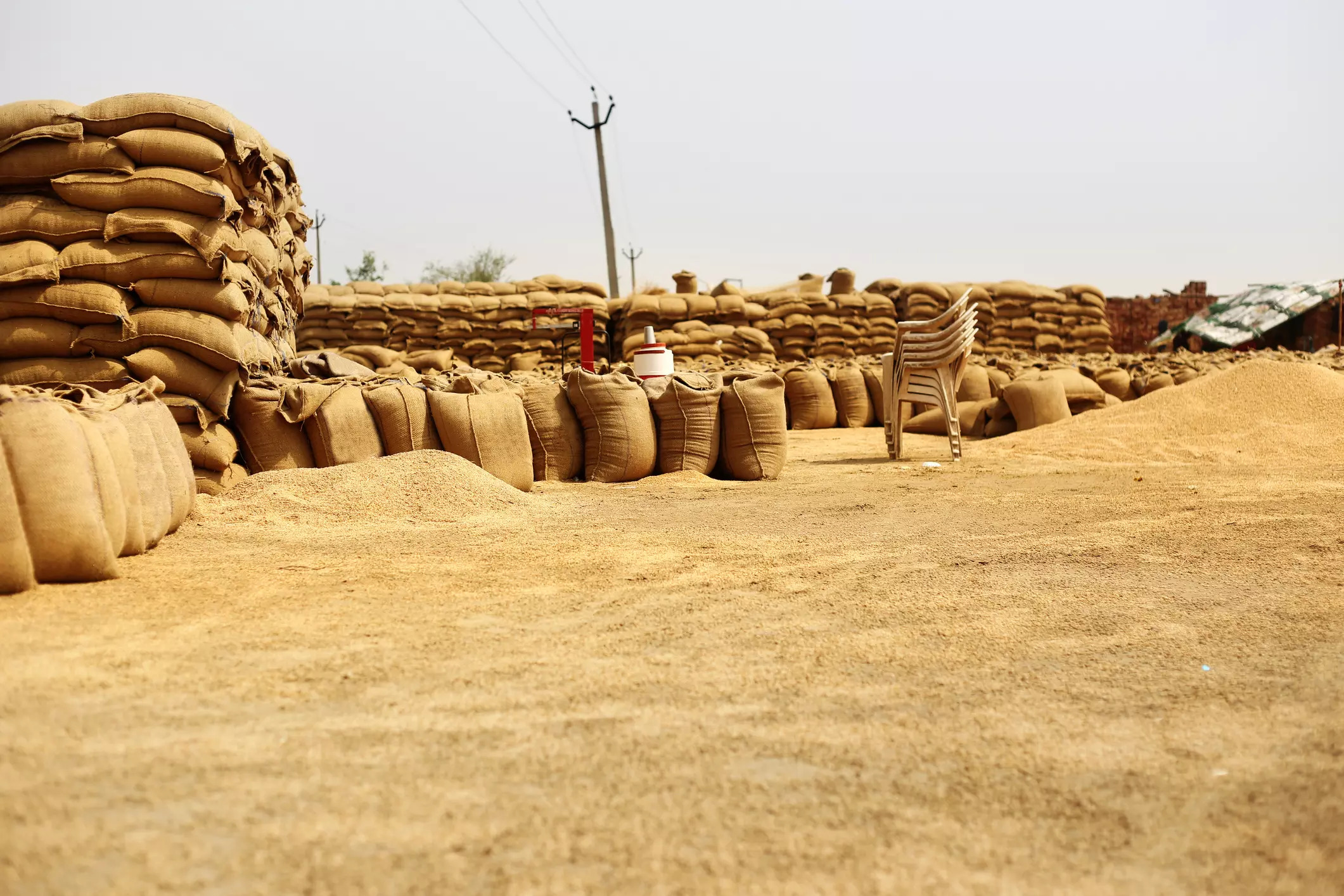In 2022, India was poised to feed the world that was seeing a grain shortage. In 2024, it seems to be struggling to replenish its depleting wheat reserves. The situation has raised concerns in various quarters.
Experts point out that the country’s agricultural exports had touched a historic high of $50 billion in FY22 as staples such as wheat, rice, sugar, and other cereals broke production records. Now the country might have to be open to the idea of importing wheat to refill the national stockpile. This highlights how uncertainty in the country’s agriculture policy is detrimental for farmers and traders, they add.
Wheat stocks in government warehouses were at a 16-year low at the start of April. This is primarily because the government had to do record stock sales to boost domestic supplies and cool the grain’s prices, as crop yields were lower in the previous two years.
At the start of April 2024, wheat stocks in government stores stood at 7.5 million tonnes (MT), down from 8.35 MT in the previous year, according to the Food Corporation of India (FCI). The quantum in storage has averaged at 16.7 MT over the past decade on April 1. Notably, the government’s buffer and strategic reserve norms mandate having wheat stocks at or above 7.46 MT on April 1. So, this year’s stocks are uncomfortably close to the buffer level, which the government uses to feed the poor; tackle food shortages during natural calamities and other such events; and helps maintain demand supply balance in the country.

Wheat stocks in government warehouses were at a 16-year low at the start of April.
This situation pushes the country to import wheat, experts say. However, Minister of Commerce & Industry Piyush Goyal had said in January that the government would not import wheat as a bumper crop was expected this year and that would boost the stockpiles.The import gap
Wheat production in 2024 is expected to be 105 MT, 6.25% lower than a government estimate of 112 MT, the All India Roller Flour Mills Association had said in April.
In the next season, the government is expected to purchase 30-32 MT of wheat to maintain the stock level above the buffer norm. The government had procured a record 43.33 MT of wheat in the 2021-22 marketing season; 26.2 MT against a target of 34.15 MT in 2023-24; 18.8 MT against a target of 44.4 MT in 2022-23.
A United States Department of Agriculture report released in the last week of March said that India could be forced to import 2 million tonnes of the grain this year on account of its low wheat stocks.
Wheat is sown in October-November and harvested during March-April. Rabi marketing season runs from April to March, and the bulk of wheat procurement is done between April and June. In 2024, the government began wheat procurement on March 1 instead of the usual April 1.
Policy U-turn
Just two years ago, the government had asked bulk buyers, processors, and retailers to procure wheat directly from farmers. This was mainly done to clear the excess stock at the mandis or wholesale markets, says agricultural policy expert Devender Sharma. But recently, there have been reports that the government has informally asked around 40-odd agriculture commodity trading companies to stay away from procurement so that FCI can buy farmers’ stocks.
“So, the wheat policy of the government has taken a complete U-turn in just four years, implying policy uncertainty. India has fallen from a dominant position, where it allowed private companies to buy wheat directly from farmers, and is now asking the same companies to stay away from procurement,” adds Sharma.
The government should have learnt from the debacle that happened in 2005-06 when the Congress-led UPA was in power, he says. Private players were then allowed to directly trade with wheat farmers, resulting in a shortage in the government warehouses. This forced the government to import around 7 MT of wheat in the subsequent two years at almost double the prices. “This is also the very reason why the UPA government had significantly increased the MSP (minimum selling price) of wheat in the coming years, to calm the farmers down (as imports skew the price in the domestic market). It wasn’t out of choice but compulsion,” says Sharma. “If that is not policy uncertainty, what is it?”

In the next season, the government is expected to purchase 30-32 MT of wheat to maintain the stock level above the buffer norm.
Rakesh Tikait, farmer leader and national spokesperson of Bharatiya Kisan Union (BKU), agrees with Sharma that India’s wheat policy, especially in procurement, hasn’t been clear for long. “Our country is no longer an agricultural nation at the international level. It’s slowly emerging as a country of labourers … a country that provides cheap labour to foreign manufacturers setting up shop here,” alleges Tikait.
Companies feel the wheat
Such a situation makes it difficult for food companies to draw up and stick to a business plan.
Manish Aggarwal, Director-Bikano, Bikanervala Foods, says the significant decrease in wheat procurement and low stocks in government warehouses highlight the need for a more robust and proactive approach to ensure food security and stability in grain markets. “The informal requests to private traders to delay buying wheat in the new season indicate efforts to regulate prices and manage the procurement process more effectively. However, the discrepancies between procurement targets and realistic outcomes raise concerns about the adequacy of current policies and their implementation,” he says.
Adverse weather conditions are already disrupting wheat procurement in states, such as Madhya Pradesh and Uttar Pradesh. The regulatory inconsistency only exacerbates the troubles for all stakeholders.
“Traders navigate unpredictable market conditions and regulatory ambiguities, hindering their ability to plan effectively and make informed decisions. Millers contend with disruptions in procurement and production, leading to increased costs and logistical complexities. Consumers face price fluctuations and supply shortages, impacting their purchasing power and access to essential food items. Farmers grapple with uncertainties over weather, demand and pricing mechanisms, jeopardising their income,” explains Aggarwal.
Wheat maths: What happened so far
But not all experts are worried. Navneet Chitlangia, Senior Vice President, All India Roller Flour Mills Association, says, “The wheat position in the country is not that bad.”
The government had to resort to export restrictions as the situation changed.
Government stocks exceeded the buffer limit. The reserves were significantly depleted as it had to distribute a big share of this buffer through the public distribution system to alleviate distress during the Covid crisis. The Ukraine-Russia war caused a surge in international prices of wheat, as the region is a major exporter of wheat. When wheat prices started to rise, the government talked about exporting. “There was no inkling that the situation could get worse. As soon as the production fell, the government couldn’t procure enough stock, while the private players had procured enough wheat at MSP. The government somehow managed the year with the little surplus it had. Soon after, it imposed export restrictions. After one-and-a-half months, it also banned export of wheat products,” explains Chitlangia.
India, the world's second-largest wheat producer, banned the exports in May 2022 to cool domestic prices. In 2023, the government procured 26.5 MT of wheat, which was just sufficient to meet the public distribution system (PDS) and Open Market Sale Scheme (OMSS) requirements.
Other factors affecting wheat policy
Experts say even after the ban, the government made some changes to the allocation of wheat in the PDS system to tackle the shortage. It disbursed rice in place of wheat to some states, changing the rice-wheat disbursal ratio, say market observers.

India, the world's second-largest wheat producer, banned the exports in May 2022 to cool domestic prices.
“This year, by April 24, our report says that 9.3 million tonnes of wheat have been procured (government target is 32-33 MT),” Chitlangia says. Referring to a breakup of the procurement from states, he says Punjab and Haryana have had a good crop; Madhya Pradesh should fare well; and the numbers from Uttar Pradesh are being closely watched.
Chitlangia is ok with the government allowing imports to ease the situation in the market. “There is nothing wrong in importing 2-3 MT of wheat to stabilise the whole situation. The government has to balance the needs of farmers and consumers,” he adds.
Policy uncertainty & systematic risk
The decreased wheat procurement in recent years can be primarily attributed to two factors, says Satyam S Sundaram, Partner-Government and Public Sector, EY India. First, farmers are receiving more than the MSP as the Ukraine-Russia conflict has elevated global wheat prices; second, agronomists point to “terminal heat effect” as rising temperatures reduce grain weight and yield. Recent reports from major wheat-producing states indicate yield losses of 15-20%.
Some experts say wheat production should also be taken into account to get a better picture. While the stocks in government warehouses may be significantly lower this year, wheat production hit an all-time high of 110 MT in 2022-23; based on estimates, it would set a record in 2023-24 as well.
Pallavi Agrawal, Team Lead, Foundation for Economic Development, says, “It’s not that we aren’t producing enough, but that government warehouses aren’t being filled. If farmers are willing to sell it to others and not the government, assuming they have easy access to sell to the government, then they must be receiving better offers from private players,” adds Agrawal, suggesting that government procurement policies may need a review.
Sharma, the agriculture policy expert, says a study by ICRIER-OECD shows uncertainty made farmers lose Rs 45 lakh crore between 2000 and 2016. An OECD report released in October 2023 says that in 2022-23, when India imposed trade restrictions on grains, the farmers suffered a loss of $169 billion in just one year.
“No one has ever raised any voice on it. Had there been a Rs 5 lakh crore loss for corporates due to policy uncertainty, the skies would have fallen,” adds Sharma.

A United States Department of Agriculture report released in the last week of March said that India could be forced to import 2 million tonnes of the grain this year on account of its low wheat stocks.
Need for policy clarity
Experts say that India can enhance its wheat procurement policy by implementing certain key measures. First, transparency and clarity should be prioritised on policies.
“Predictable market signals are essential,” says Aggarwal of Bikano. “These give traders, millers and farmers certainty regarding government procurement and market demand. Efficient procurement mechanisms, including improvements in infrastructure and logistics, are needed for timely purchase from farmers. Fair pricing mechanisms are crucial to balance remunerative prices for farmers and affordability for consumers. Market integration should be promoted to facilitate seamless movement of wheat across states. Risk management strategies are needed to mitigate the impact of external factors on procurement. Lastly, stakeholder consultation is vital, ensuring that policies are responsive to the needs of farmers, traders, millers, and consumers.”
While the government’s role in wheat procurement is a must to ensure food security, support welfare schemes, provide stable markets for farmers and regulate the domestic prices, there should also be a policy that is flexible enough to address these diverse needs simultaneously.
Sundaram suggests widening the public procurement window, facilitating hassle-free price realisation for farmers through price forecasting, and establishing procurement or aggregation centres closer to farms.
No comments:
Post a Comment